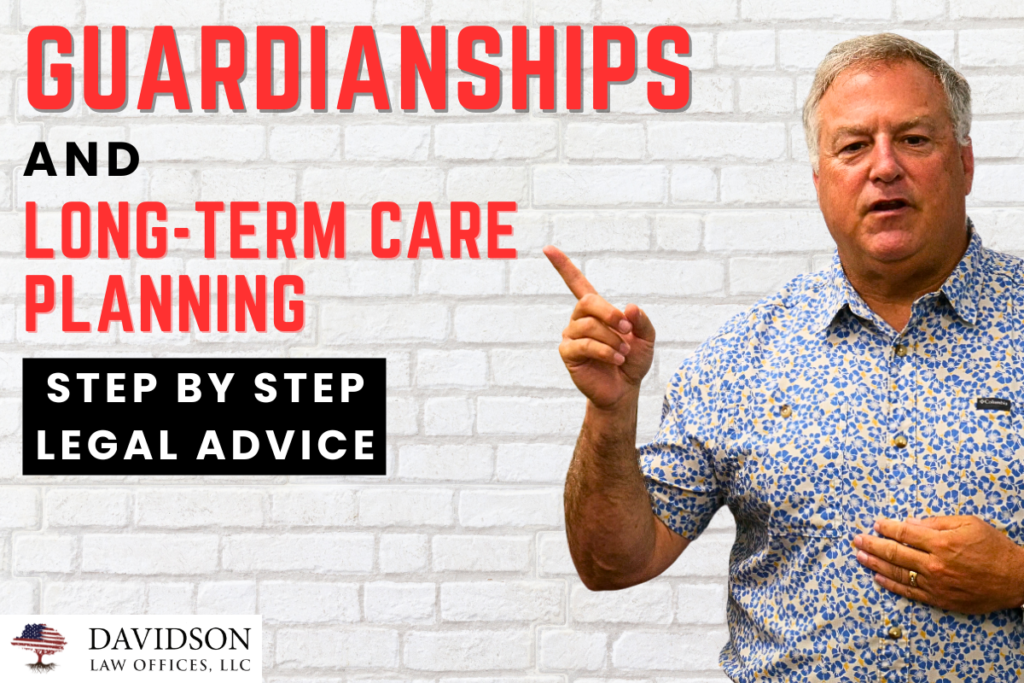I want to talk to you about something that’s come up a lot lately in my practice—guardianship and how it intersects with long-term care planning, Medicaid, and protecting the assets of a loved one.
Whether you’re already serving as a guardian or conservator, or you’re about to step into that role, you may be wondering: Can I do anything to protect my parent’s or loved one’s money from being drained by nursing home costs? The short answer: Yes—but there’s a process. And it’s one that requires some careful steps and, often, a return to the probate court.
Let’s dig into what it really means to be a guardian and how you can become a financial shield for your loved one while navigating the complexities of long-term care.
Guardianship vs. Conservatorship: One Mission, Two Hats
When I say “guardianship,” I’m using it as a broad term to cover both guardianship (control over the person) and conservatorship (control over the property). Whether you’re responsible for health decisions, financial matters, or both, your role as a guardian is to act in the best interest of the person you’re caring for—your ward.
But here’s the challenge: courts don’t usually hand out blanket powers that let you engage in long-term care or asset protection planning right off the bat. Most orders are pretty limited unless you go back to court and request expanded authority.
So, what do we do? First, we assess the current court order. What powers did the court actually give you? Then, we look at the ward’s financial situation—what assets do they have? Are they eligible for Medicaid? How close are they to hitting the financial limits for assistance?
Right now, if your ward is in a skilled nursing facility, they can’t have more than $2,000 in assets and their monthly income must be under about $2,900 (at least here in Georgia). If they’re over that threshold, they may need a qualifying income trust. That’s a discussion for another day, but it’s part of the bigger picture.
Burn Rates, Medicaid, and Building the Case
After evaluating the court order and the ward’s finances, I help families do a “burn rate” analysis. This is where we calculate the monthly cost of care and project it over the expected lifespan of the ward. We’re trying to answer the question: How long will the money last if we keep paying $10,000 a month for nursing home care?
Spoiler alert: not long.
According to Genworth’s Cost of Care Survey, the national average cost for a nursing home is around $120,300 a year—or a little over $10,000 per month. And those numbers are going up about 4–5% per year. If your ward has dementia or Alzheimer’s, those costs can be even higher due to the need for more secure facilities.
So once you understand the financial landscape and the burn rate, it’s time to go back to probate court. You’ll need to request additional powers so you can implement a legitimate asset protection plan. Without the court’s blessing, you simply don’t have the authority to make those moves.
And let’s be clear: asset protection planning is not about hiding money or dodging the rules. It’s a legally recognized, court-approved strategy that allows you—as the guardian—to stretch your ward’s dollars further, ensuring access to necessary care while also preserving dignity and financial stability.
Making the Case: Best Interest and Substituted Judgment
When you approach the court for permission, you’ve got to argue your case effectively. The two key legal standards are:
- Best Interest of the Ward: Is this plan in the ward’s best interest for health, well-being, and financial longevity?
- Substituted Judgment: What would the ward want if they were able to make this decision for themselves?
Think about it. Would your loved one want to pay $10,000 a month to a nursing home out of pocket, or would they prefer to preserve their hard-earned savings and still receive quality care under Medicaid, while using their remaining assets to supplement that care? Most folks I know would choose the latter.
There are multiple strategies that may be approved by the court, including transferring excess assets into non-countable forms, using irrevocable trusts, spending down assets on qualified medical expenses, or even transferring certain assets to a caretaker child.
The key is this: your plan must be well thought out, legally sound, and completely focused on the guardian’s duty to act in the ward’s best interest.
Convincing the Court, Preserving the Future
When you go before the judge, lay it all out:
- Show the financial facts: monthly care costs, current assets, and how long they’ll last.
- Emphasize your fiduciary duty: you’re not doing this for yourself or the family, you’re doing it for the sole benefitof your ward.
- Explain that Medicaid recipients often receive the same care as private pay patients, and that private pay just adds a small monthly supplement.
Your goal is to get the court to grant you the authority to put this asset protection plan in place. Once you do, you’re on a path to helping your ward maintain quality care without draining their resources in just a few short years.
In closing, if you’re a guardian or conservator, and you’re worried about rising care costs and dwindling assets, don’t assume your hands are tied. Get with a knowledgeable probate and elder law attorney, evaluate your court order, and take steps to go back to court for expanded powers if needed.
Because at the end of the day, your job as a guardian is more than paperwork. You’re the protector, the planner, and the voice of your loved one. And with the right plan, you can secure not just their health care—but their dignity, autonomy, and financial peace of mind.
Contact Us for Help!
If you need assistance with estate planning in Georgia or Florida, complete this form or give us a call at (229) 226-8183. If you’d like to see this blog in video format, you can watch it below. Please be sure to SUBSCRIBE to our YouTube channel and click the bell notification button so that you’re notified each time we publish a new video.

